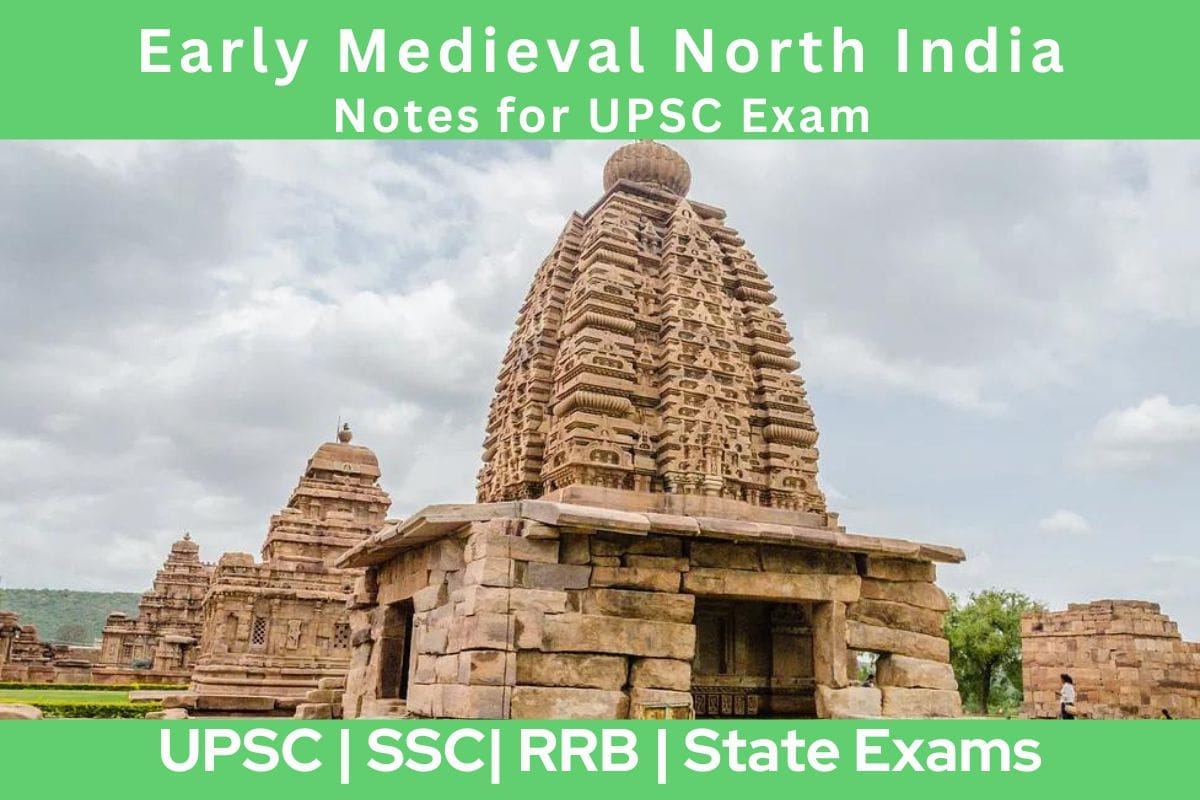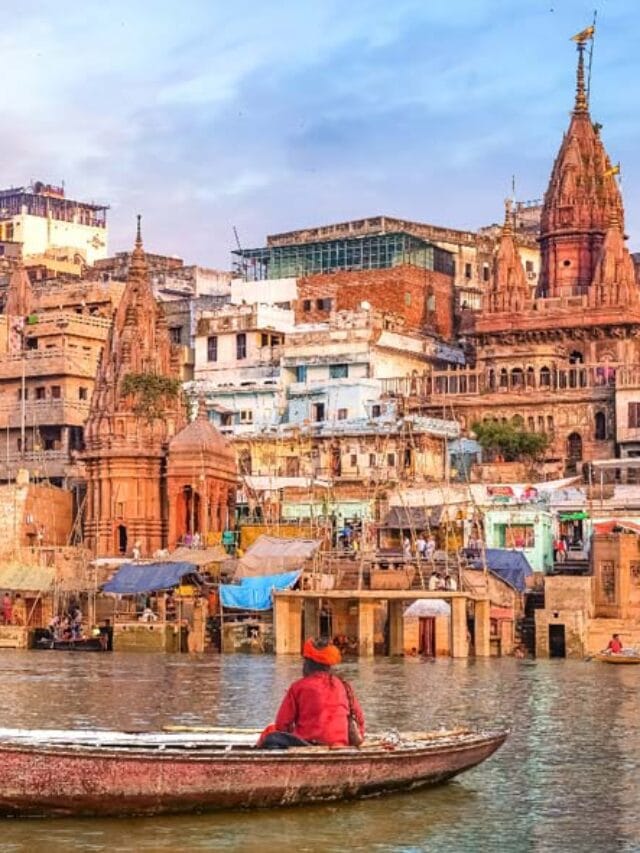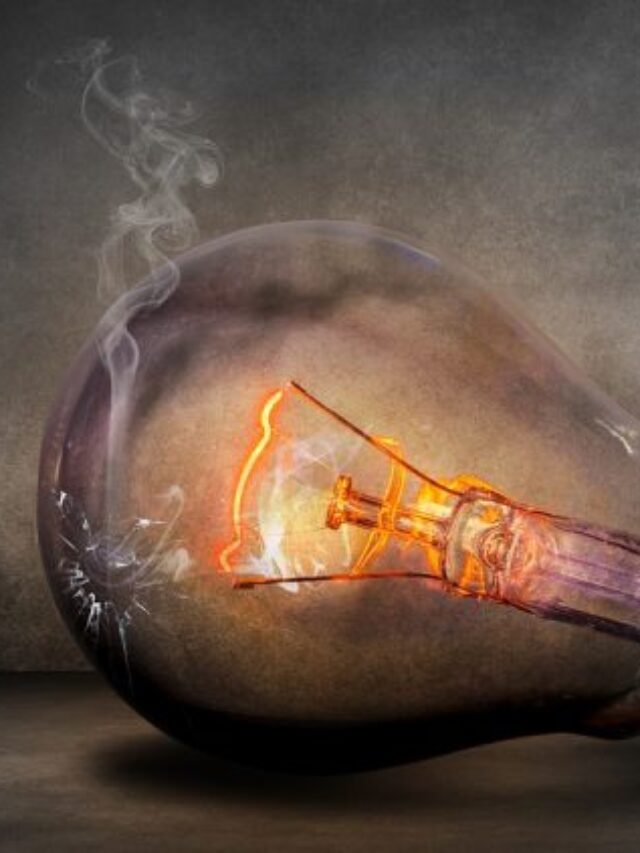
The time between ancient and medieval times is called the “early medieval” period. During this phase, which lasted from around 600 to 1200 CE, various regional states started forming.
There are two distinct phases in this period, each having different characteristics in the northern and southern parts of India. This article explores early medieval India, discussing rulers like Harshavardhana, Pulakesin I, Pulakesin II, and others, important for UPSC IAS exam.
Early Medieval Period
- In the early medieval period of India, roughly between 600 and 1200 CE, the northern part was initially governed by the Pushyabhutis of Thaneswar and the Maukharis of Kannauj from 600 to 750 CE.
- Meanwhile, in the southern part during the same period, three major states emerged: the Pallavas of Kanchi, the Chalukyas of Badami, and the Pandyas of Madurai.
Northern India
In the northern region from 750 to 1200 CE, this period can be divided into two phases:
- Phase Ⅰ (750–1000 CE) – This era in the north witnessed three significant empires: the Gurjara Pratiharas in the north, the Palas in the east, and the Rashtrakutas in the Deccan.
- Phase Ⅱ (1000–1200 CE) – Also known as the age of conflict, this phase saw the tripartite powers breaking into smaller kingdoms. The Gurjara Pratihara empire disintegrated into various Rajput states controlled by different dynasties like Chahamanas (Chauhans), Paramaras of Malwa, Chandellas, and more. These Rajput states resisted Turkish attacks from northwest India led by Mahmud Ghazni and Mohammad Ghori in the 11th and 12th centuries.
In the period from around 600 to 750 CE in northern India, the Pushyabhutis of Thaneswar played a significant role.
The Guptas were in power in northern and western India for about 160 years, centered in Uttar Pradesh and Bihar. After the fall of the Gupta empire, northern India fragmented into several small kingdoms. Around the 5th century CE, the white Hunas ruled western India, Punjab, and Kashmir.
By the mid-6th century CE, the control of northern and western India shifted to several feudatories of the Guptas. Among these, the Pushyabhutis, ruling from Thanesar in Haryana, gradually extended their authority over other feudatories. Key historical accounts of the Pushyabhuti dynasty come from Banabhatta’s Harshacharita and the travel writings of the Chinese traveler Hiuen Tsang, who visited India in the 7th century CE. Banabhatta, the court poet of Harsha Vardhana, and Hiuen Tsang provide valuable insights into this dynasty.
Dynastic History
Pushyabhutis
- Pushyabhutis were originally feudatories of the Guptas.
- Prabhakar Vardhana (middle of the 6th century):
- The first significant king of the Pushyabhuti dynasty.
- His capital was Thanesar, located north of Delhi.
- Known for military successes.
- Married his daughter, Rajyashri, to Grahavarman, a ruler of Maukhari.
- Succeeded by his elder son, Rajyavardhana.
- Rajyavardhana faced challenges when Grahavarman was killed and Rajyashri imprisoned by Devagupta of Malwa, in collaboration with Shashanka, the ruler of Gauda (Bihar and Bengal). Rajyavardhana marched against Malwa, defeated its army, killed Devagupta, but was treacherously murdered by Shashanka.
Harsha
- Harsha Vardhana, who ruled from around 606 to 647 CE, inherited the throne after his brother Rajyavardhana.
- Despite being only 16 years old, he proved to be a skilled warrior and capable leader.
- His first major action involved saving his sister, Rajyashri, from the practice of sati in Kannauj after the death of his brother.
- Harsha followed a policy of religious tolerance, initially being a follower of Shiva but later becoming a significant supporter of Buddhism.
- Considered the last great Hindu king of India, he earned the title “Lord of the North.”
- In his military campaigns, Harsha successfully drove out Shashanka from Kannauj, made it his capital, and defeated Dhruvasena of Valabhi.
- His influence expanded over regions like Rajasthan, Punjab, Uttar Pradesh, Bihar, and Odisha.
- Harsha’s reach extended to peripheral states such as Kashmir, Sindh, Valabhi, and Kamarupa.
- A remarkable event during Harsha’s reign was a religious assembly at Kannauj, where he honored the Chinese pilgrim Hiuen Tsang.
- Representatives of Hinduism, Buddhism, and Jainism attended.
- Hiuen Tsang praised Harsha for his kindness and courtesy, mentioning a grand assembly in Allahabad known as Prayag.
- Harsha’s literary contributions included three plays—Nagananda, Priyadarshika, and Ratnavali. He also wrote texts on grammar and sutra works.
- Nalanda, a major center of Buddhism during his time, was supported by Harsha and became a renowned university attracting scholars globally. The Chinese pilgrim I-tsing noted its grandeur and mentioned 3,000 students in 670 CE.
Harsha’s Administration
- Harsha’s administration followed a structure similar to the Guptas but with more decentralization and a feudal system.
- Leading feudatories like Bhaskara Varma, Purnavarman, Udita, and Dhruvabhatta played crucial roles.
- Harsha’s army, comprising infantry, cavalry, chariots, and elephants, surpassed the Mauryan forces. Feudatories contributed to the vast imperial army when needed.
- Land grants continued, resembling Brahmadeya lands, offered to priests for their services.
- People faced light taxes, and the revenue was divided for the king’s expenses, scholars, officials, and religious purposes.
- Harsha, known for just administration, regularly inspected his dominion.
- Hiuen Tsang noted Pataliputra and Vaishali’s decline, while Prayag and Kannauj gained importance. Brahmins and Kshatriyas led simple lives, while nobles and priests enjoyed luxury.
- Shudras, mainly agriculturists, experienced improved status. Untouchables like the chandalas lived miserably.
Maitrakas
- The Maitrakas, tributary chiefs of the Guptas, formed a separate kingdom in western India, ruling Saurashtra with Vallabhi as their capital.
- Dhruvasena II, a key Maitraka ruler, was Harsha’s contemporary, married to his daughter.
- They prospered due to trade, ruling until the mid-8th century.
The Maukharis
- The Maukharis, Gupta subordinate rulers, adopted the title Samanta.
- They controlled Kannauj, replacing Pataliputra as the northern capital.
- After Harsha’s successful expedition, Kannauj merged with the Pushyabhuti kingdom, becoming the new capital. The Maukharis are mentioned in Patanjali’s work.
Maukhari Dynasty
- Hari Varhmana Maukhari (mid 6th century)– Assumed the title Maharaja; not much information available about him.
- Advaita Varma- Hari Varhmana’s son who took the title of Maharaja.
- Ishanavarmana (c. 554 CE)- Considered the actual founder of Maukhari dominance; adopted the title Maharajadhiraja (according to the Asirgarh copper plate inscription).
- Under his rule, the kingdom expanded to Andhra Pradesh, Orissa, and Gauda (Bengal).
- Successfully resisted and defeated Huns’ attacks, fighting as feudatories of Baladityagupta from the Gupta dynasty.
- Sarvavarmana (c. 560 – 585 CE)– Presumed to be Ishanavarmana’s son. Ruled over Magadha; an inscription in Nimar district (Madhya Pradesh) notes his victory over Damodar Gupta, calling Nimar a “Maukhari outpost in the Deccan.”
- Avanti Varmana (c. 585 – 600 CE)- Succeeded Sarvavarmana; expanded the empire’s boundaries and shifted the capital to Kannauj.
- The Maukharis reached their zenith during his reign.
- Grahavarmana (around c. 600 CE)- Married to Prabhakar Vardhana’s daughter from the Pushyabhuti dynasty. Treacherously killed by Shashanka, the king of Gauda.
- Following Grahavarmana’s demise, the Maukharis gradually declined and eventually disappeared.
MCQs Test on Early Medieval North India








Leave a Reply